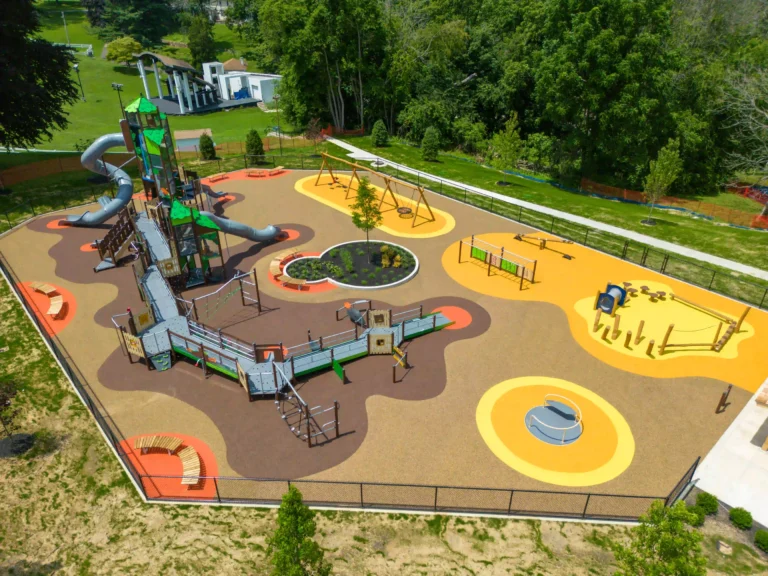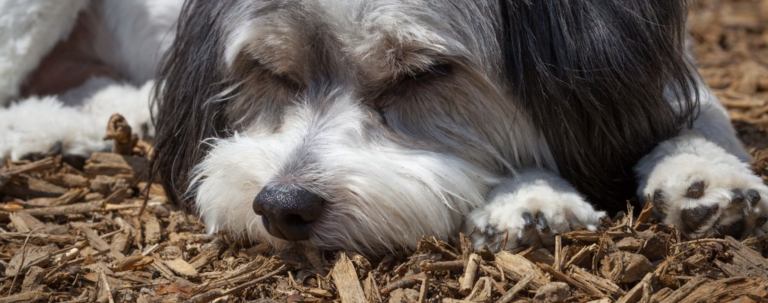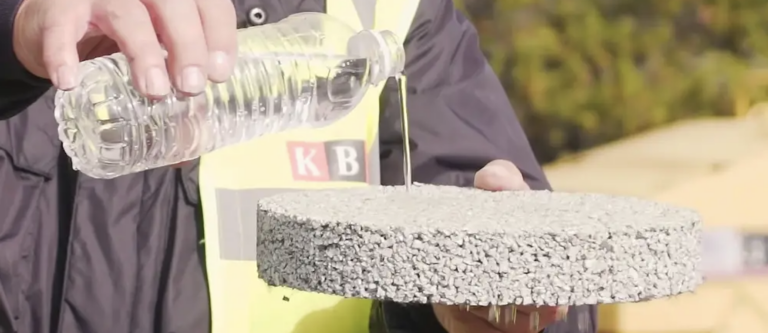Having proper playground surfacing is important for the safety of the children using your playground. Kids are rough and tumble; they will be jumping off swings, from high areas and roughhousing with each other.
If your playground is surfaced improperly or with the wrong material, kids will get injured. This opens you up to potential litigation from parents and can give your school/park a bad rap.
For these reasons, choosing the right playground safety surfacing is pivotal in making sure your playground is safe and functional for the kids that use it. In this article, we will break down the ins and outs of playground surfacing and what you need to know to keep your playground safe.
Safe Playground Surfacing Options
There are many different types of playground surfacing options, each with benefits and drawbacks. The most popular options are: Poured in place rubber, Flexi-pave, bonded rubber mulch, and artificial grass. Keep reading to understand the pros and cons of each.
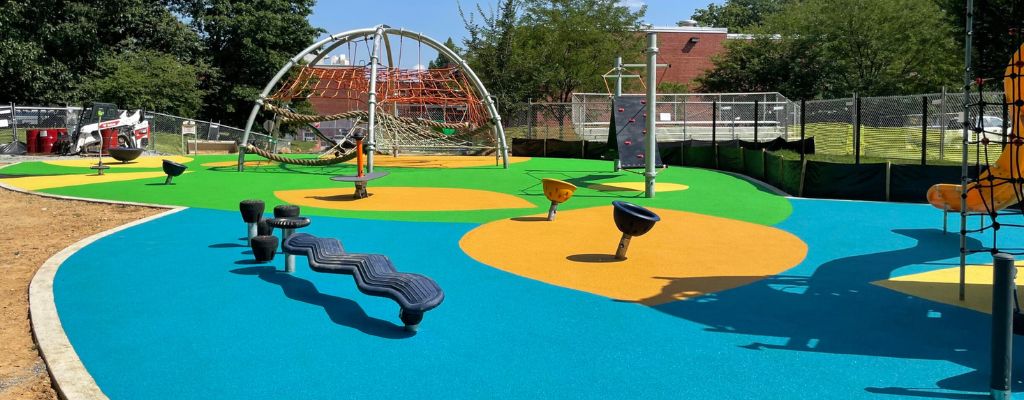
Poured-in-place Rubber
Poured-in-place rubber is a popular choice for playground surfaces due to its significant safety features. Its shock-absorbing properties greatly reduce the risk of injuries from falls, making playgrounds safer for children. The material is also low maintenance and durable, resisting wear and weather, which keeps long-term costs down. Customization options allow for a variety of colors and designs, enhancing the aesthetic appeal of playgrounds while ensuring accessibility for all children, including those with disabilities. However, there are drawbacks to consider.
Poured-in-place rubber can retain heat, particularly in darker colors, which may be uncomfortable in hot weather. The initial installation is costly and must be done by professionals to ensure safety and longevity. Over time, if repairs are needed, they can be expensive, and eventually, the surface may require complete replacement. However, poured-in-place rubber can last a very long time, upwards of 10-15 years, with no additional maintenance.
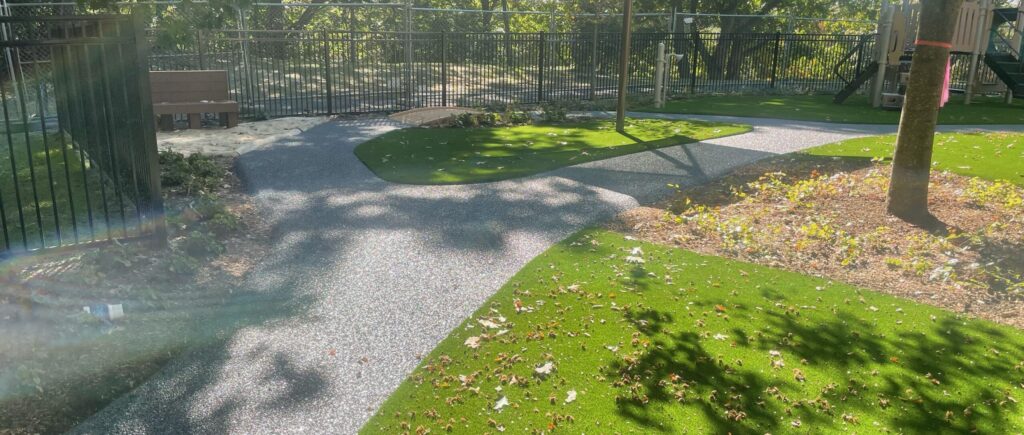
Flexi-Pave
Flexi-Pave is an innovative surfacing material known for its flexibility and durability, often used in playgrounds for safety surfacing. One of the major advantages of Flexi-Pave is its high permeability, allowing water to pass through and reducing puddle formation and slip hazards. This feature also makes it environmentally beneficial as it aids in stormwater management. Made from recycled tires, it’s an eco-friendly option, repurposing waste into a useful product. Its flexibility means less cracking and better resistance to temperature changes compared to traditional pavement. Moreover, it’s impact-absorbing, reducing the risk of injuries from falls.
However, there are some considerations to keep in mind. While Flexi-Pave is durable, its textured surface can wear over time in high-traffic areas, leading to potential maintenance or replacement. The initial installation cost can be higher than traditional materials due to the specialized process and materials used. While it’s safe and non-toxic, the aesthetic appeal might differ from more natural options, which can be a consideration for certain design preferences.
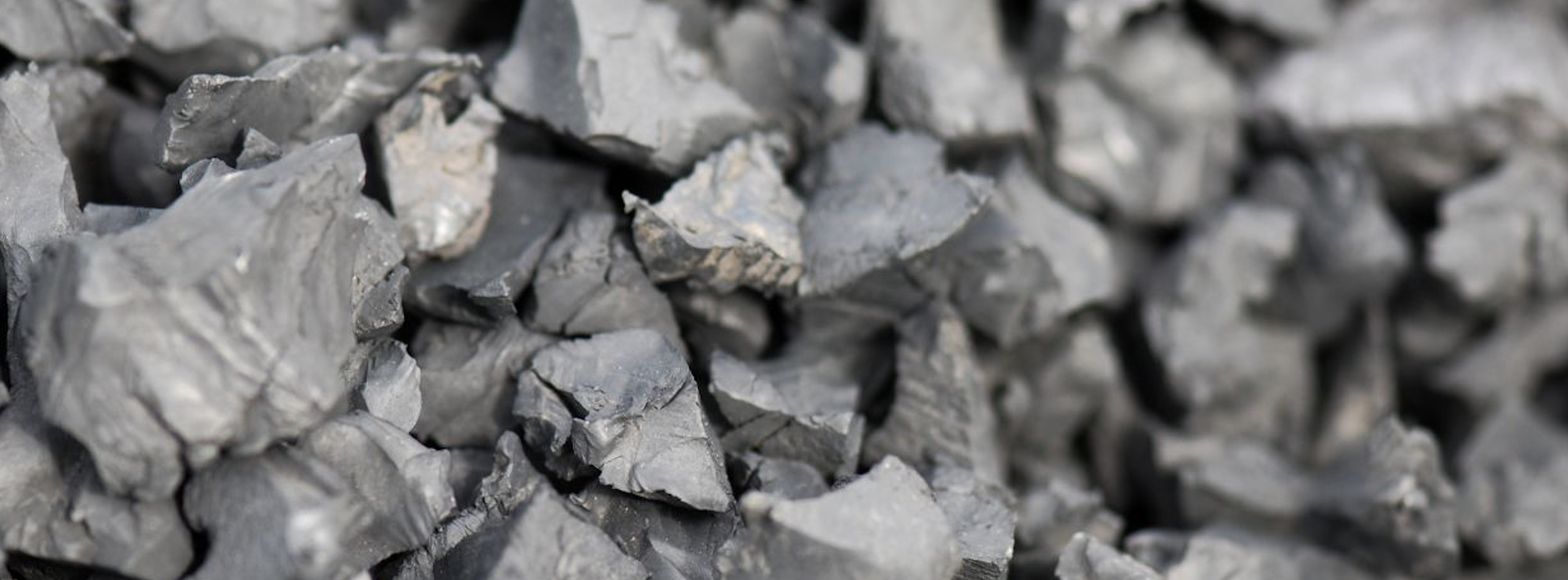
Bonded Rubber Mulch
Bonded rubber mulch is a single-layer surfacing often used in playgrounds for its safety and aesthetic qualities, mimicking the look of natural wood mulch while being more durable and cohesive. One of the primary advantages of bonded rubber mulch is its impact-absorbing properties, offering excellent protection against falls and reducing injury risks. It’s also low maintenance, as the bonded material doesn’t scatter or decompose like traditional wood mulch, meaning less frequent topping up or replacement. Being made from recycled rubber, usually tires, it’s an environmentally friendly option that repurposes waste material.
However, there are some disadvantages to consider. While it provides a natural look, over time, the color can fade due to UV exposure, requiring re-coating to maintain its appearance. The initial installation of bonded rubber mulch can be more expensive than loose-fill alternatives, although its longevity may offset the upfront costs in the long run. There’s also the consideration of heat retention; like many rubber products, it can get hot in direct sunlight, potentially becoming uncomfortable in warm weather. The texture and firmness can vary, so ensuring the product is from a reputable provider and installed correctly is crucial to maintain safety standards.
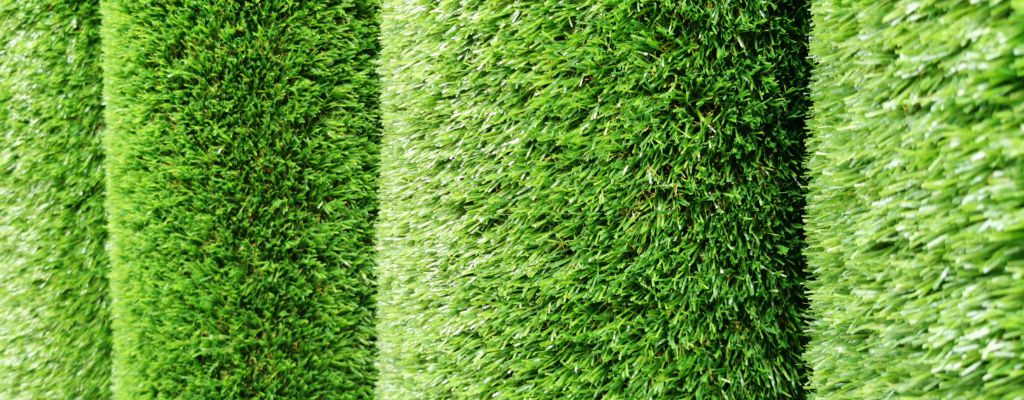
Artificial Turf
Artificial turf is often touted as a low-maintenance alternative to natural grass, offering a consistently green and uniform appearance without the need for watering, mowing, or fertilizing. It’s particularly favored in areas where water is scarce or upkeep of natural grass is challenging. However, when it comes to playgrounds or areas where fall safety is a concern, it’s essential to understand that while artificial turf can be safer than regular grass in some aspects, it’s not primarily designed for impact absorption.
Regular grass can become compacted over time, lose its cushioning effect, and may conceal hazards like rocks or uneven ground, potentially increasing the risk of injuries from falls. In contrast, artificial turf provides a more predictable surface, reducing tripping hazards and avoiding issues like mud and puddles. Some types of artificial turf are installed over a shock-absorbing base layer, which can offer some level of impact protection, but it generally doesn’t provide the same level of safety as specialized impact-absorbing surfaces like poured in place rubber or bonded rubber mulch.
Therefore, while artificial turf can be a suitable replacement for grass in terms of appearance and maintenance, it should not be relied upon as a safety surface for impact absorption in playgrounds. For areas where fall protection is crucial, it’s important to invest in appropriate safety surfacing that meets the necessary standards and is designed to reduce the risk of injuries from falls.
Takeaway
Poured-in-place rubber, Flexi-Pave, and bonded rubber mulch are all excellent playground safety surfaces, each with unique benefits. Poured-in-place rubber offers high customizability and shock absorption, Flexi-Pave is eco-friendly with excellent drainage, and bonded rubber mulch provides a natural look with good durability. The choice among them should be based on specific project needs like budget, aesthetics, maintenance, and safety requirements. Consider the local climate, desired design, and longevity when selecting the right material to ensure a safe and enjoyable playground environment.

